Leucothoe has a lot going for it:
It is a beautiful, flowering, evergreen, deer-resistant, low-maintenance, native shrub. It works very well as a foundation plant, groundcover, hedge, tree-underplanting, or pathway lining. With all these virtues, why is this excellent plant so under-used in our suburban landscapes?
Maybe it’s because nobody knows how to pronounce it? We’ve heard it said:
Lew-COE-tho-way, Lew-COE-tho-wee, and LEW-cuh-tho – and all those from experts! We favor the first choice, but if you’re shopping for it, the nursery staff likely will understand any of those options.
Or maybe Leucothoe suffers from the horrifying Greek myth behind the name? Poor Leucothoe was an innocent young woman whose father punished her, for entirely wrong reasons (look it up!), by burying her alive, whereupon she turned into a plant! Of course, it wasn’t this plant, because this plant is native to the Eastern US, and the ancient Greeks didn’t even know it existed.
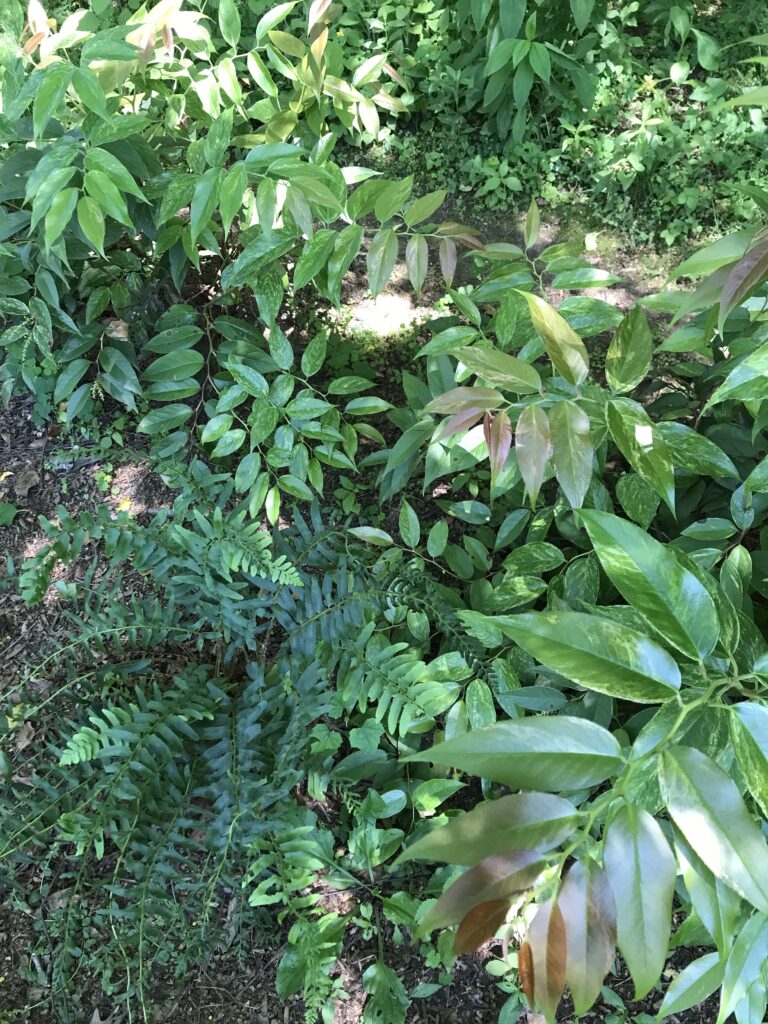
Whatever the reason, Leucothoe definitely should be better known. There are actually two species of Leucothoe native to the East Coast. Leucothoe fontanesiana ranges from Louisiana to New York, while Leucothoe axillaris naturally appears only as far north as Delaware. It is not easy to tell the two species apart, and there are cultivars with fancy leaf colors derived from both. We see Leucothoe axillaris sold here frequently as Coast or Coastal Leucothoe. Leucothoe fontanesiana tends to grow a little taller, so read the nursery tag to see what the grower indicates for size.
So why should you know this plant? Leucothoe is beautiful, with gracefully arching stems and shiny, evergreen leaves. It is easy to grow, and incredibly useful. It typically grows about 3 feet high, and slowly spreads wider. It is naturally an understory plant, so it is happiest in shade, but will live in sun if it has enough moisture. Leucothoe is perfect as an evergreen ground cover, especially near wooded areas where pachysandra or ivy would pose an invasive threat. It will retain moisture and suppress weeds, so you can use it instead of mulch around trees or shrubs.
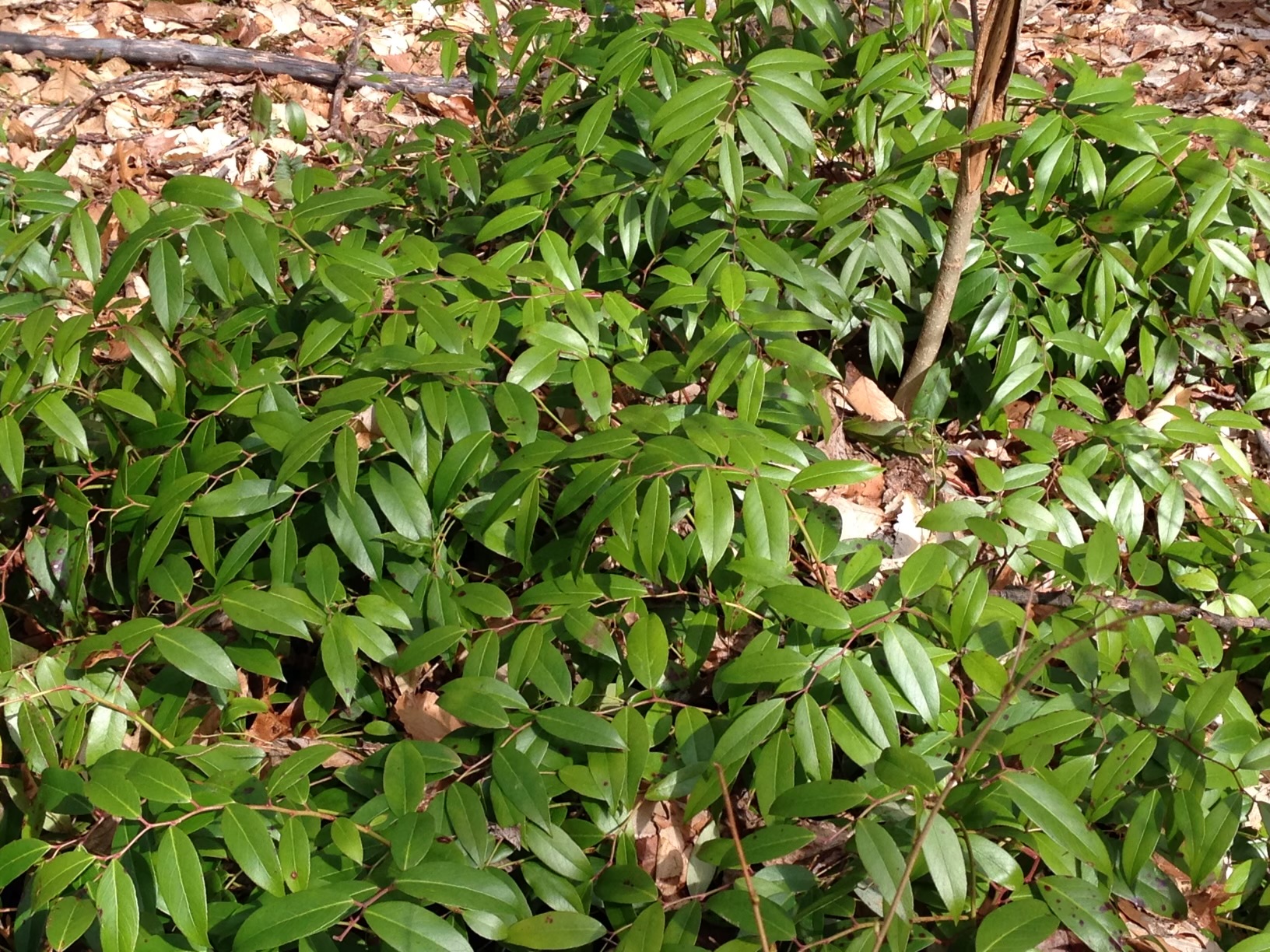
Leucothoe evolved growing in the relatively mild winters of Southeastern forests. It is a Zone 5 to 7 plant, so it should be protected from the coldest winter wind. You can use it as a foundation plant on the shady side of the house and not worry about having to prune it for size. It can drape over a stone wall or define the edge of a garden path. Pro tip: although sold in nursery pots with instructions to plant in a hole the same depth as the pot, we find Leucothoe likes to have its roots spread out wide and shallow, which makes it easier to plant around established trees and shrubs, too.
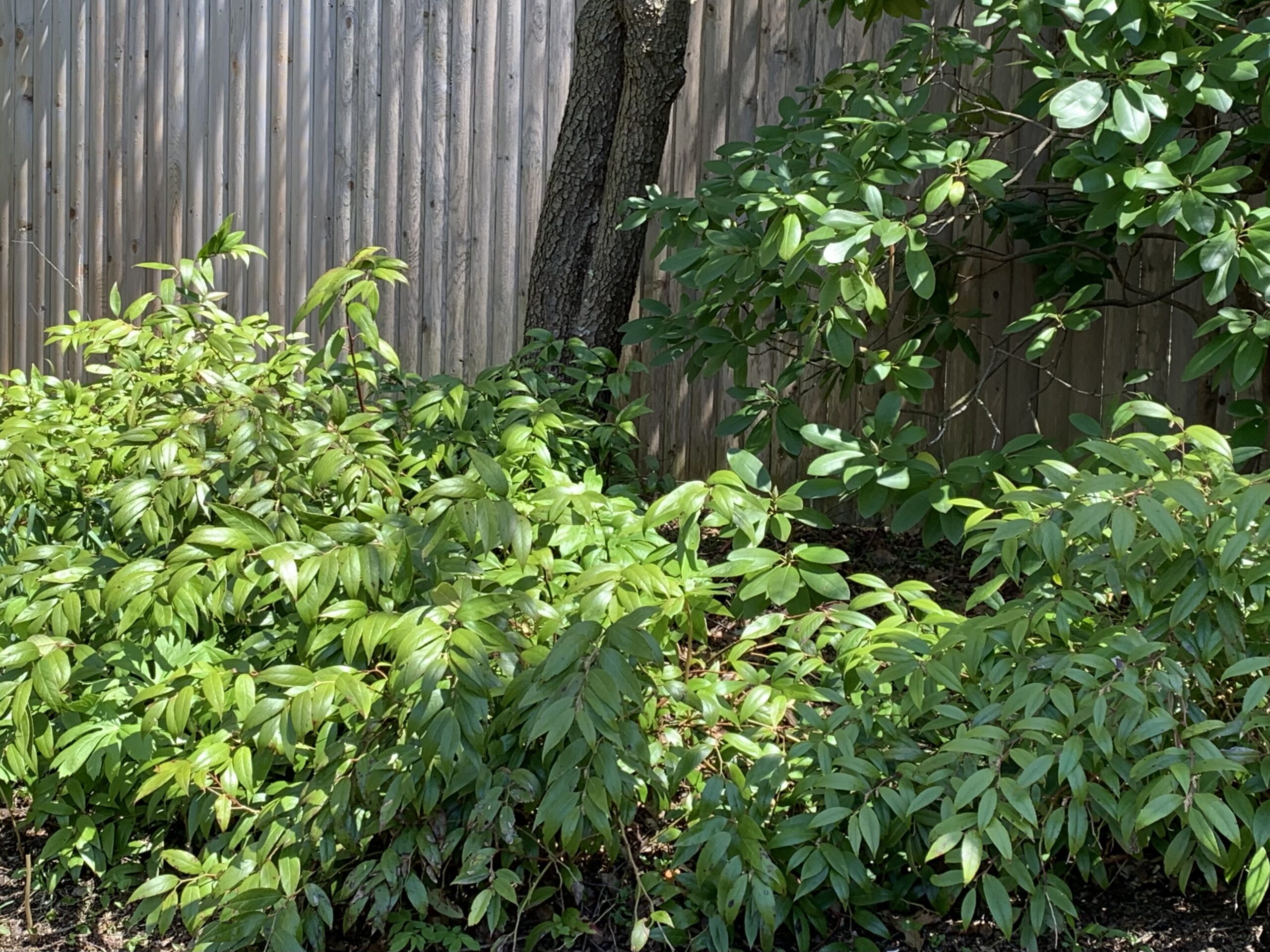
Leucothoe flowers in late spring with little white bells that look like lily-of-the-valley, though the leaves hide the flowers to some extent. New leaves emerge in red or bronze shades before turning deep green. In winter, the shiny green leaves are very welcome.
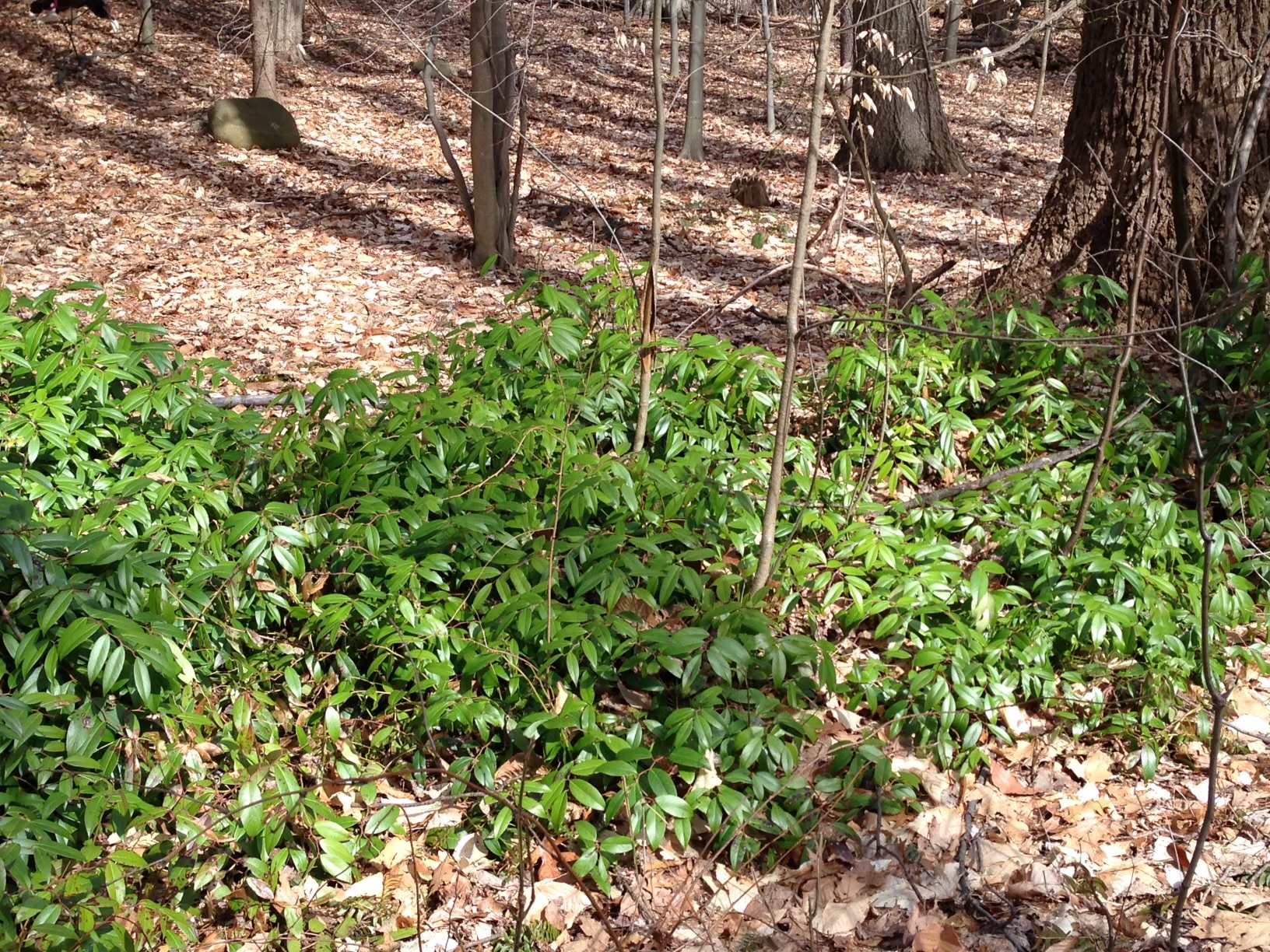
Did we mention deer-resistant? We have found Leucothoe thriving in the woods in winter in areas known to be major deer hang-outs. And on our grounds at the Nature Center, Leucothoe is the only native woodland plant that really holds its own against the invasion of English ivy.
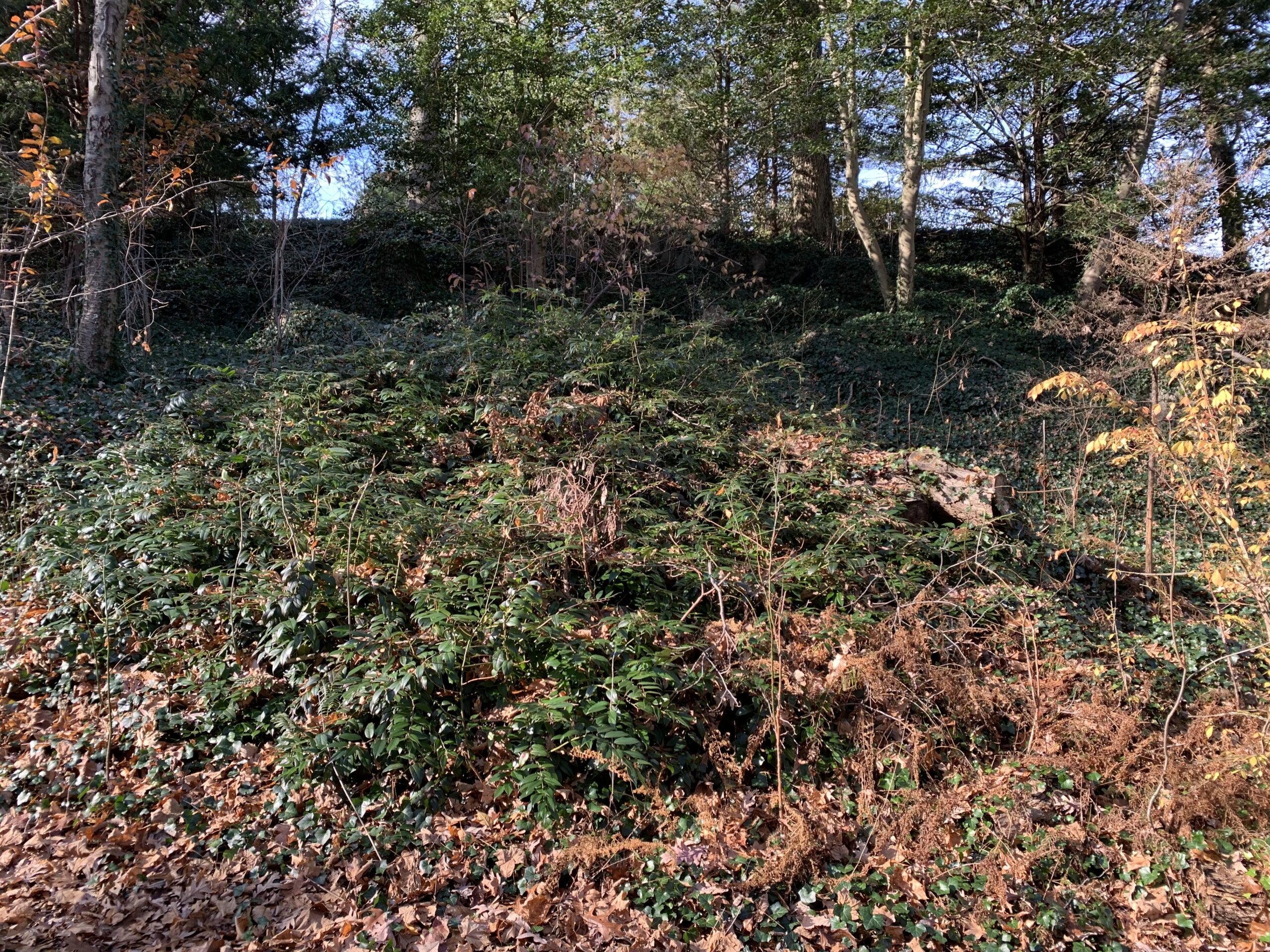
So, consider Leucothoe as a native substitute for English ivy, Japanese pachysandra, vinca, or wintercreeper – all known to be seriously invasive if they reach wooded areas. Leucothoe forms a shiny, dark green skirt for the base of trees, leggy shrubs, or fences. It looks good all winter, and will still be looking good when the daffodils bloom in spring.
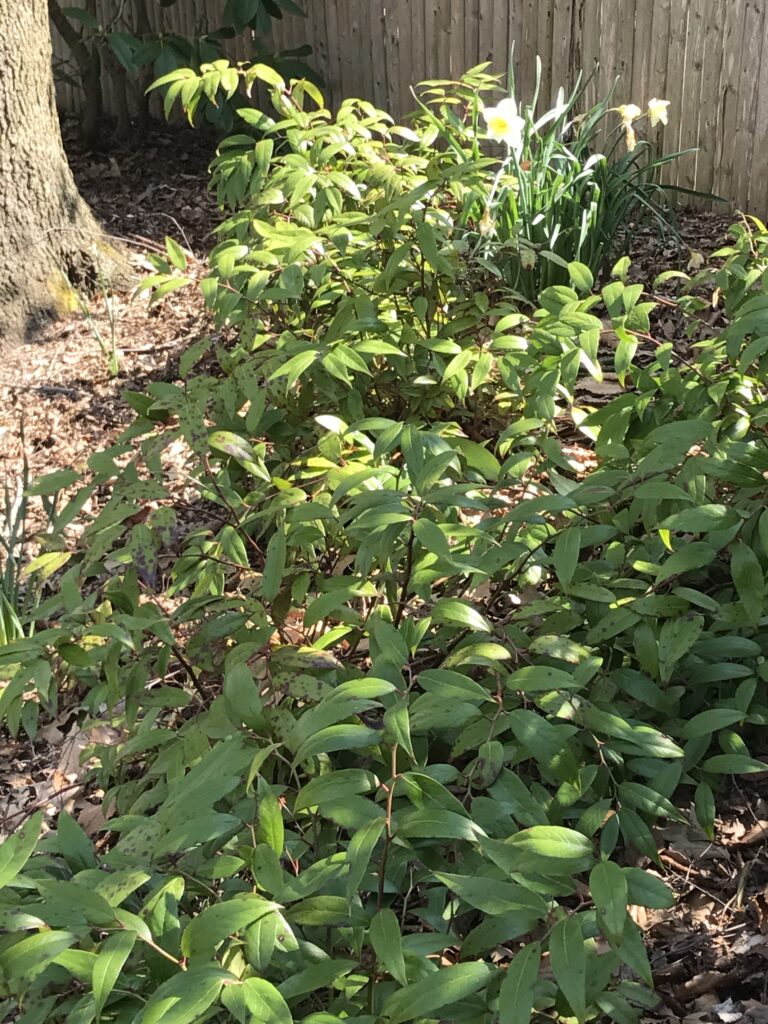
This blog is authored weekly by Cathy Ludden, conservationist and native plant educator; and Board Member, Greenburgh Nature Center. Follow Cathy on Instagram for more photos and gardening tips @cathyludden.

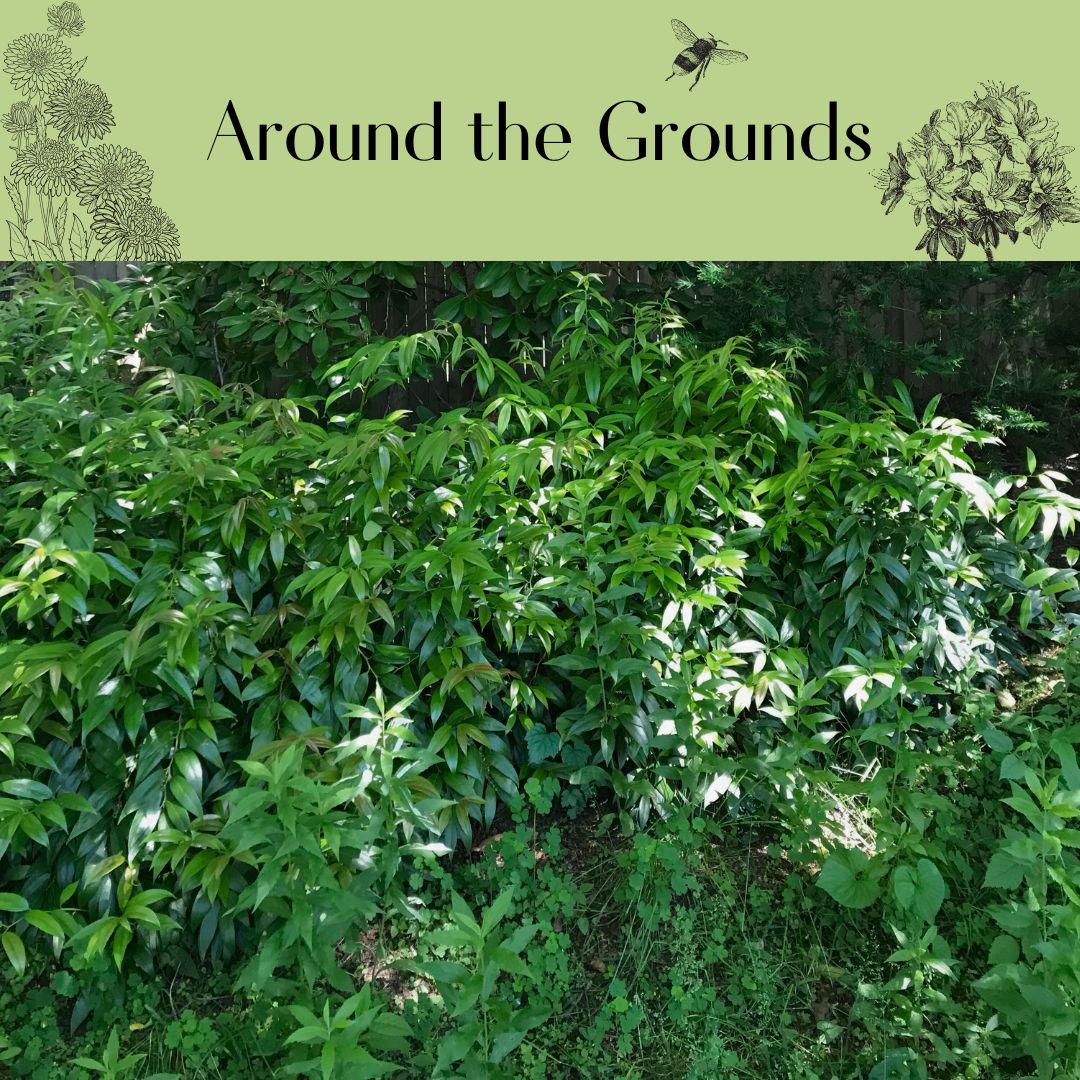
Hi Cathy! I’ve got a major lesser celandine problem on my property here in Westchester County. I need to devote a couple Saturdays to digging it all out – think this would outcompete it if I miss a few celandine bulbs? Also: got any tips on where to buy it? Thanks again for the amazing posts!
Hi, Austin. I’ve been dreading this issue. I’ve seen lesser celandine showing up around Westchester and it’s really alarming. In Baltimore, it is so widespread, even in formal gardens, that some gardeners are just deciding to live with it — especially because it disappears my mid-summer. The advice I read on line is to carefully dig out small patches and then monitor for return and keep after it. For larger infestations, Round-up (glyphosate) early in the season — sprayed carefully on the leaves on a still, sunny day with no rain in the forecast — is advised. If you avoid chemicals, manual effort is the only option. In a relatively shady area, I think Leucothoe could help control the return of celandine. The shrub will shade it out, and because it’s evergreen, may discourage its return in spring. I think it’s a worth a try!
Oh! Forgot to answer the last question… I’ve found Leucothoe axillaris and Leucothoe fontenensiana at Rosedale Nursery in Hawthorne. Look for the species (may be labeled Coast or Coastal Leucothoe) rather than the variegated or multi-colored cultivars, which I have found to be less reliably hardy.
Deer ate every leaf this winter. Will the plant recover?
I’m really surprised to hear that! In parks and wooded areas with lots of deer traffic, I see leucothoe untouched. Your local deer must have been really starving. We can hope for new growth in the spring — if the deer didn’t damage the plant too severely, it may recover. If it starts to show buds and emerging leaves, give it some protection with chicken wire, or spray deer repellent (Liquid Fence), and let’s hope the plant makes a come-back.
I love this plant…can’t get enough of it. It divides easily and very hardy.
Same here — I added more in the fall.
I bought 3 of these shrubs and was going to plant them in the front of my house (south side). It is sunny most of the day. Will this be ok? I read somewhere they are a fire risk. Is this true?
~Michelle (Ohio)
Hi, Michelle. Leucothoe is native to moist wooded areas and prefers at least part shade. I use it as an understory plant where it does very well as a medium height groundcover, even in full shade. In full sun, I suspect it will scorch and need supplemental water. I have read that it is pretty flammable, which isn’t a big problem if it is planted in moist shady areas. I think the sunny area next to your house is not an optimal location for it.
I am interested in planting Leucothoe Scarletta in 2 shrub beds — a northeast bed and a southeast bed in Buffalo NY. Will they thrive in this area? They would be under trees. Is this the best Leucothoe for this area? Thanks!
Hi, Mary. Scarletta is a cultivar of Leucothoe fontenansiana, said to be winter hardy to Zone 5. I’m not sure Buffalo is in that zone range, but you can find out by checking the USDA zone map for NY. They are happy under trees, generally, but if you are border-line Zone 5 you may want to offer them some winter protection. Leave a good covering of fallen leaves over them for the winter to protect them. As woodland plants, they enjoy a winter leaf cover in nature.
Hi, Mary. Scarlatta is a cultivar of Leucothoe fontenansiana said to be hardy through Zone 5. I’m not sure whether Buffalo is colder than that, but you can find out by checking the USDA map for NY. If you are borderline Zone 5, you can protect the shrubs over winter by leaving a good layer of fallen leaves. As woodland plants, they are adapted to a winter leaf cover naturally. I let mine sit in the leaves fallen from the trees above them, and they seem to benefit from that.
I love his plant, but I have heard that leucothoe fontanesiana is very poisonous, flammable and should not be planted near a structure. I am hoping that is not true. Can you shed some light on this?
The good news is that deer don’t eat Leucothoe, and the bad news is that they avoid it because it is toxic to both humans and animals. My dogs never mess with it, but if you have young children, that is a concern. The flammability is an issue I have seen raised, and I understand that many plants with aromatic foliage and bark also burn easily. Since Leucothoe is a plant that favors shady, moist woodlands, flammability isn’t a big concern in those areas. Planted under trees in part or full shade, it is unlikely to be a risk. In sunny dry areas, close to a house, it probably wouldn’t do very well anyway, and I would go with a different choice.
Hi Cathy,
Great blog as always. I love this plant and will think about using around the base of trees. Very helpful!
Jim
I think that will work, Jim. It’s pretty versatile. I have heard from others who love it as a foundation plant and a rock garden plant also. And nobody has had trouble with deer eating it!